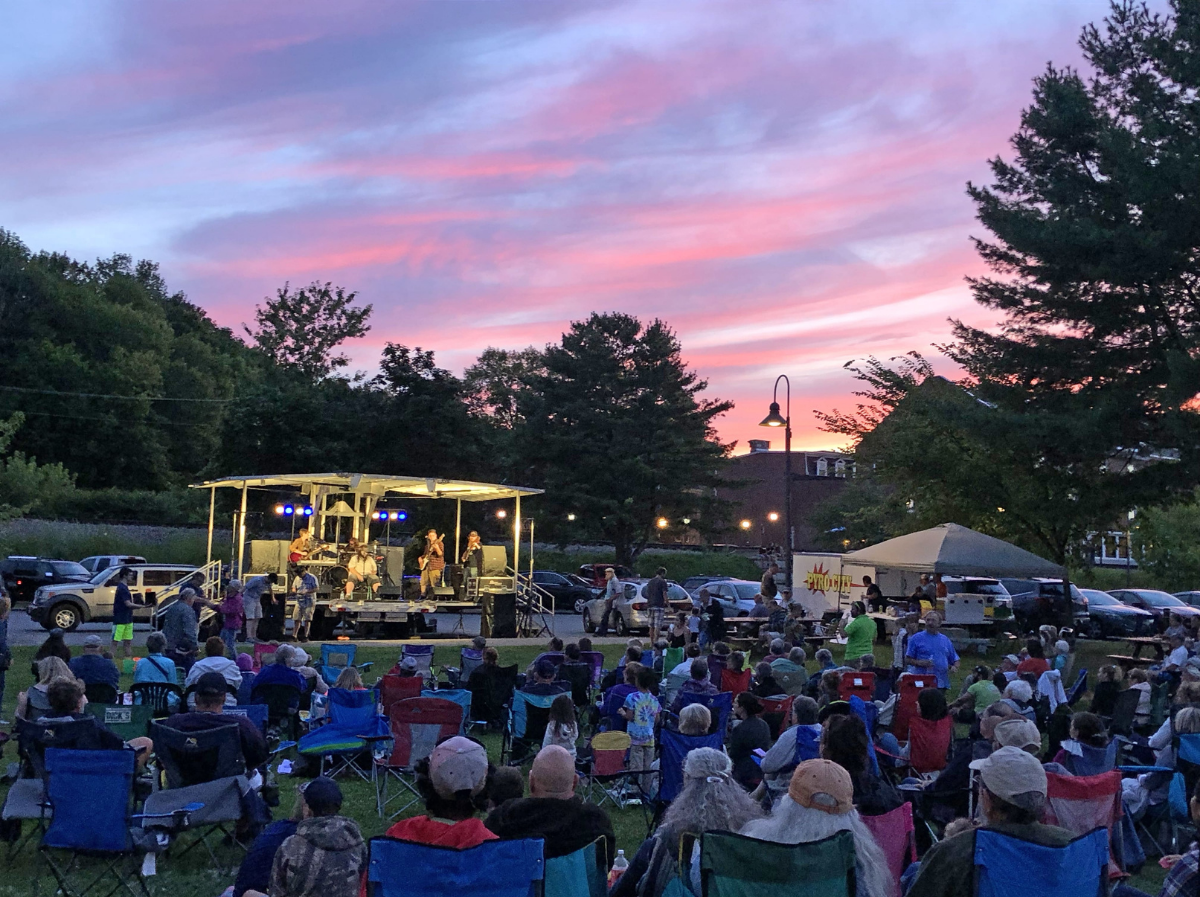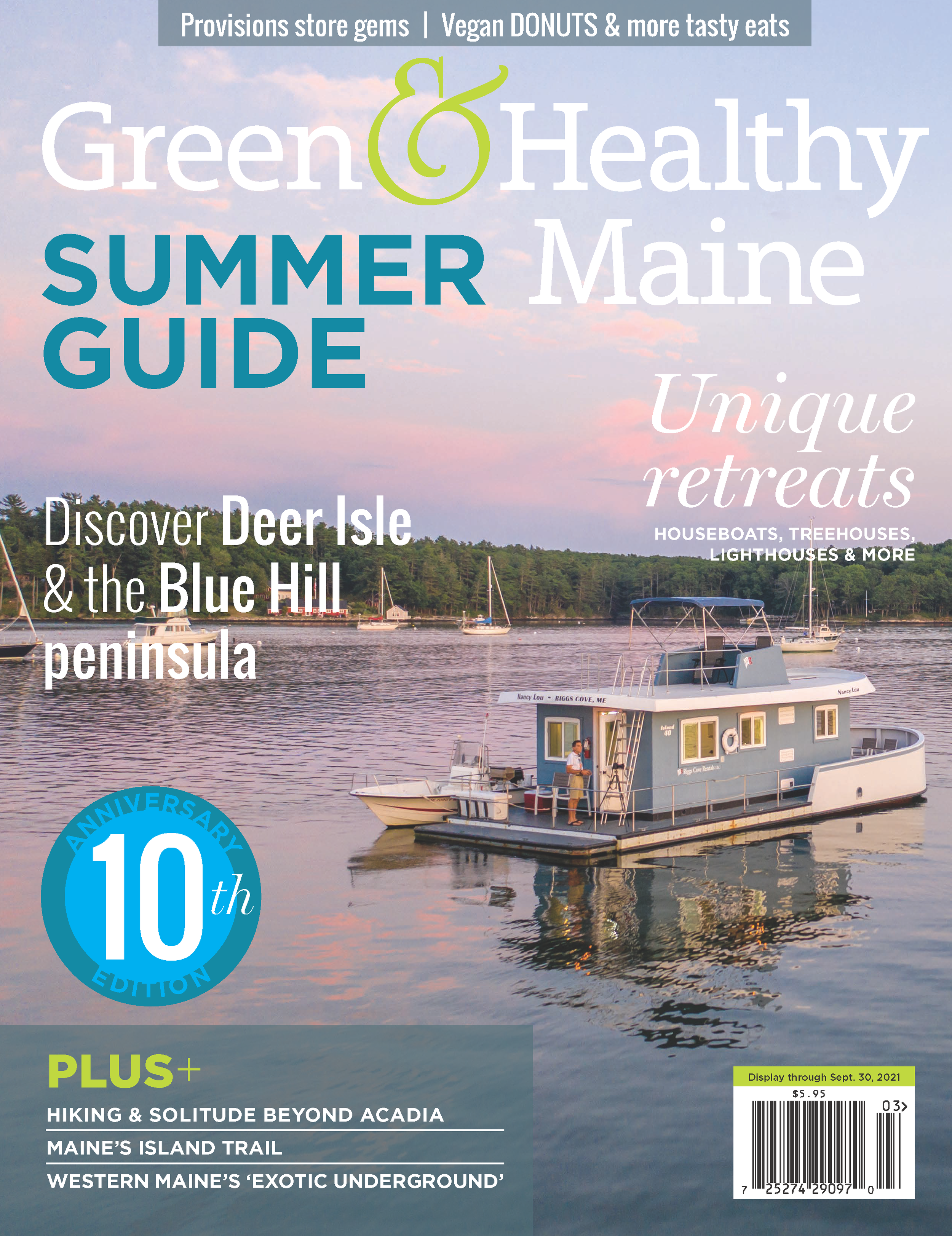Main streets revitalized
Water Street runs through downtown Gardiner towards the Kennebec River. Johnson Hall—Maine’s oldest opera house—is shown, midway up on the left. Photo courtesy of Gardiner Main Street.
By Jennifer Hazard
Main streets are the heart of a community. They are where we go to shop, eat, meet with friends and celebrate all the good things our towns have to offer. While it may not seem it to an outsider looking in, a thriving main street—like a thriving community—takes vision and hard work. When a community comes together, through volunteers, business leaders, students and residents, beautiful possibilities can happen.
No one knows this better than Anne Ball, the statewide coordinator for Maine Downtown Center (MDC), a program of the Maine Development Foundation. MDC is part of a nationally accredited program called Main Street America, which is a proven resource for communities looking to revitalize their main streets. Currently, 10 Maine towns have established non-profit organizations with hired staff to rebuild their communities. Fifteen more towns have affiliate programs made up of community volunteers. Ball works with all of these town to help them with everything from thoughtful downtown design to promoting their main streets with community-driven events
According to Ball, one of the most important tenets of becoming a thriving downtown is to remember that the work of rebuilding happens incrementally. “Revitalizing a main street is a full journey,” Ball says. “Towns need to access volunteers from all parts of the community to make it happen.”
Diners enjoy outdoor seating along Main Street in Biddeford. Photo courtesy of Heart of Biddeford.
Time & Tide Coffee on Main Street in Biddeford, is one of many new food, beverage and retail businesses opened in downtown Biddeford in recent years. Photo courtesy of Heart of Biddeford
Biddeford
One of the communities working alongside MDC is Biddeford, Maine’s youngest downtown. Since 2004, this post-industrial mill town has worked tirelessly to create a creative, energetic community with a bustling food and arts scene. Delilah Poupore is the Director for Heart of Biddeford, a volunteer-driven organization designed to foster its downtown through support and continued growth. Poupore, who lives in a mill apartment with her husband and teenage daughter, says Biddeford’s renewal began simply by getting people together with community-wide events. From there, there was much planning to do, including building a business scene, making the sidewalks and streets safer for pedestrians and designing an aesthetically pleasing downtown. The biggest challenge, however, was removing an industrial trash incinerator in the town center which, according to Poupore, created a stigma for Biddeford, especially to those outside of the community.
With the help of MDC and dedicated volunteers, changes started to happen. The incinerator was removed, an investment was made in the historic textile mills, transforming them into a thriving campus of creative businesses and apartments, and the arts scene was propelled through a community-based non-profit called Engine that focuses on growing the creative economy in the city.
The Heart of Biddeford also widely promoted two rounds of a contest called the Main Street Challenge, which was designed to help small businesses open downtown. The prize included a $20,000 incentive package with free rent and $10,000 in forgivable loans. It was instrumental in attracting many downtown businesses that thrive today, including Biscuits & Co and Elements: Books, Coffee & Beer.
Today, Biddeford is in a great position for growth. Poupore is pleased but maintains that with growth comes further planning. “We were focused on survival for a long time, and now we’re in a more visionary space,” she says. “We have to ask ourselves how we can be sustainable and inclusive to the community.” To do so, Heart of Biddeford is developing a comprehensive planning process, which includes affordable and workforce housing, focusing on equity issues, such as supporting more Black-owned businesses, and keeping an eye on environmental sustainability. Developing more green space, such as community gardens, and creating improved downtown access to the Saco River are also part of Biddeford’s growth goals.
Waterfront Park in downtown Gardiner is a hub of activity all year long. Photo courtesy of Gardiner Main Street.
Gardiner
Like Biddeford, the town of Gardiner also began its revitalization process in 2004. Melissa Lindley, executive director of Gardiner Main Street, says the town began with visionary sessions for its historic main street, focusing on how to best preserve and celebrate its past as a leading industrial center on the Kennebec River. Lindley herself was drawn to Gardiner for its small-town feel and affordability and has raised her children in an old Victorian she fell in love with over a decade ago.
Poupore and Lindley agree that revitalization is often a one step forward, two steps back experience, and Gardiner has certainly had its share of ups and downs. A struggling economy, devastating fires and, most recently, the effects of the pandemic, have all been extraordinarily challenging for this town with a population of 5,800. Four months into the pandemic, by July 2020, Gardiner had lost 11 businesses. To stop more businesses from closing their doors, Gardiner Main Street paired up with Augusta Downtown Alliance to create the Kennebec Valley Downtown Relief Fund. The two organizations raised more than $48,000 for small businesses in the area and, with the support of Anne Ball at MDC, the grant process happened quickly. “We were able to help a number of businesses during a very dark time,” Ball says.
Since then, there’s been a positive momentum in Gardiner. By the end of 2020, new businesses were steadily opening. Lindley is most excited about the preservation work being done on 19th-century Johnson Hall, Maine’s oldest opera house. The 400-seat theater is currently 75% funded, and Lindley hopes the theater will bring nationally known acts and more people into downtown Gardiner. “In five years, we could really have a strong retail and social scene with a bustling nightlife,” she says.
Free waterfront concerts reconvene this summer at Waterfront Park in Gardiner. Details at johnsonhall.org/events. Photo courtesy of Gardiner Main Street
Corner of Front and Centre Streets in Bath. Photo courtesy of Main Street Bath
Bath
No one understands the incremental process of revitalization better than the city of Bath, which began its planning 20 years ago. Amanda McDaniel, director at Main Street Bath, says the city wants to honor its shipbuilding heritage as well as encourage travelers to pull off Route 1 to experience its quintessential New England downtown along the Kennebec River. The organization has been instrumental in creating, hosting and promoting events that draw people downtown, including the ever-popular Bath Heritage Days, their Old- Fashioned Christmas and the Summer Concert Series. While all these events drive traffic to the downtown, McDaniel believes that a city best known for its shipbuilding needs something special to make it a popular destination. “The view of Bath Iron Works is visually stunning but unfortunately, tourists cannot visit there,” she says. “We’re working to create a space where it’s possible.”
That space is an all-volunteer recreation of the Virginia—the first English ship to be built in the Americas in 1607. The hope is that someday soon the 51-foot ship will become a floating classroom for kids and adults to enjoy. Most significantly, it will be designed to meet Coast Guard standards for small passenger vessels, so it can sail along the Kennebec.
In addition to this main attraction, Bath also has a vibrant social media campaign called #fortheloveofbath, showcasing all the natural beauty, history and delicious local provisions the city has to offer. McDaniel says Main Street Bath began the campaign during the pandemic to showcase the community’s love and support for the downtown. It drew people out of their houses to walk downtown and feel a sense of community pride, which was so important during the challenge of the pandemic, and it continues to thrive on social media.
Going forward, McDaniel is grateful that outdoor events can return to Bath this summer, including free concerts organized by the Chocolate Church Arts Center at Waterfront and Library Parks.
This optimistic spirit during challenge is something Bath, Gardiner and Biddeford share.
Ball is confident that these towns—and their main streets— will continue to grow and thrive. “I’m so proud of these resilient communities,” she says. “The outpouring of support from residents is truly extraordinary.
Learn more about Maine’s Main Street Communities—Augusta, Bath, Belfast, Biddeford, Brunswick, Gardiner, Rockland, Saco, Skowhegan and Westbrook—including suggested activities and experiences, at mainstreetmaine.org.
The clock tower stands at the heart of Downtown Bath, a bustling Main Street community along the banks of the Kennebec River. Photo courtesy of Main Street Bath.









